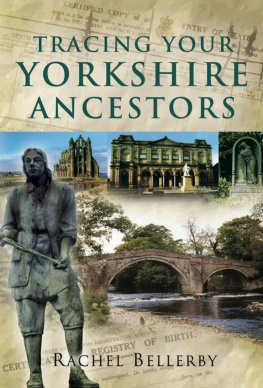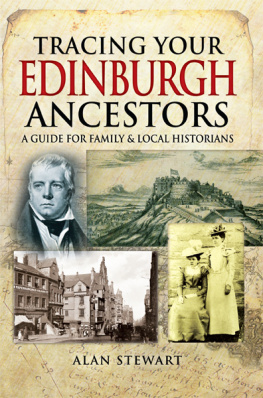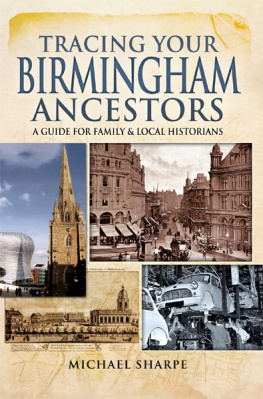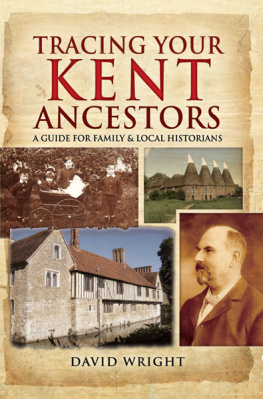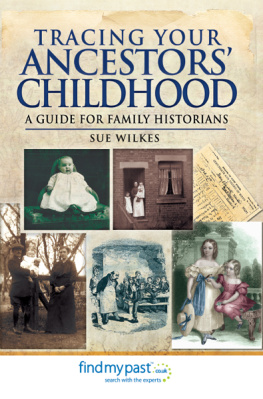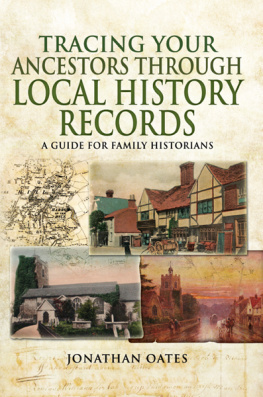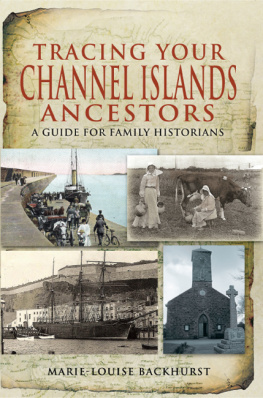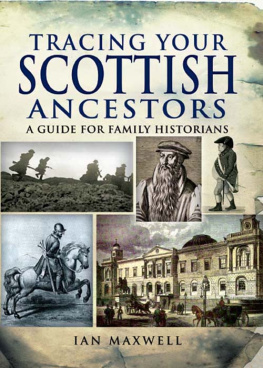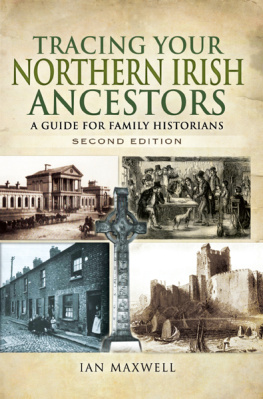
First published in Great Britain in 2015
P E N & S W O R D F A M I L Y H I S T O R Y
an imprint of
Pen & Sword Books Ltd
47 Church Street,
Barnsley
South Yorkshire,
S70 2AS
Copyright Rachel Bellerby, 2015
ISBN: 978 1 47382 800 1
PDF ISBN: 978 1 47387 402 2
EPUB ISBN: 978 1 47387 401 5
PRC ISBN: 978 1 47387 400 8
The right of Rachel Bellerby to be identified as Author of the Work has been asserted by her in accordance with the Copyright, Designs and Patents Act 1988.
A CIP catalogue record for this book is available from the British Library.
All rights reserved. No part of this book may be reproduced or transmitted in any form or by any means, electronic or mechanical including photocopying, recording or by any information storage and retrieval system, without permission from the Publisher in writing.
Typeset in Palatino and Optima by CHIC GRAPHICS
Printed and bound in England by
CPI Group (UK), Croydon, CR0 4YY
Pen & Sword Books Ltd incorporates the imprints of Pen & Sword Archaeology, Atlas, Aviation, Battleground, Discovery, Family History, History, Maritime, Military, Naval, Politics, Railways, Select, Social History, Transport, True Crime, Claymore Press, Frontline Books, Leo Cooper, Praetorian Press, Remember When, Seaforth Publishing and Wharncliffe.
For a complete list of Pen & Sword titles please contact
PEN & SWORD BOOKS LTD
47 Church Street, Barnsley, South Yorkshire, S70 2AS, England
E-mail:
Website: www.pen-and-sword.co.uk
CONTENTS
INTRODUCTION
The city of Leeds in West Yorkshire is home to some 750,000 people and is one of the five biggest cities in the UK. For centuries, Leeds has attracted incomers from across the UK and further afield; people drawn here by the citys plethora of trades, its position midway between the east and west coasts; and the easy access to the countryside of the Dales.
Tracing Your Leeds Ancestors is an adventure which can go way beyond discovering the birth, marriage and death records of your ancestors. As well discover throughout this book, there are hundreds of resources to help you find out where your ancestors would have lived, what the surrounding streets were like and what their schooling would have been. You can find out about your ancestors place of work, what leisure pursuits they might have followed and the shops and markets they would have visited.
The city is home to a number of fine archives, libraries and museums, all of which will be explored through the coming themed chapters, which cover topics including education, housing, leisure time, poverty and immigration. From an archive devoted to the history of shopping through to a modern museum facility which holds more than one million historic Leeds-related items, we learn what material is available to you and how to make the most of it to really bring your research to life. And to help you take your research that little bit further, is devoted to bygone Leeds through walking trails, museum trips and themed tours.
Dont worry, though, if youre not able to visit Leeds in person; there are plenty of ideas for online research online family history research has never been so exciting and, with photographs, oral recordings and archive film, you can enjoy the citys history unfolding from the comfort of your own home.
So, whether youre new to family history and curious to find out about what life was like in bygone Leeds or youre an experienced researcher looking to take your findings a stage further, theres plenty to explore here. So lets start our journey into the history of Leeds, the city of 1,000 trades.
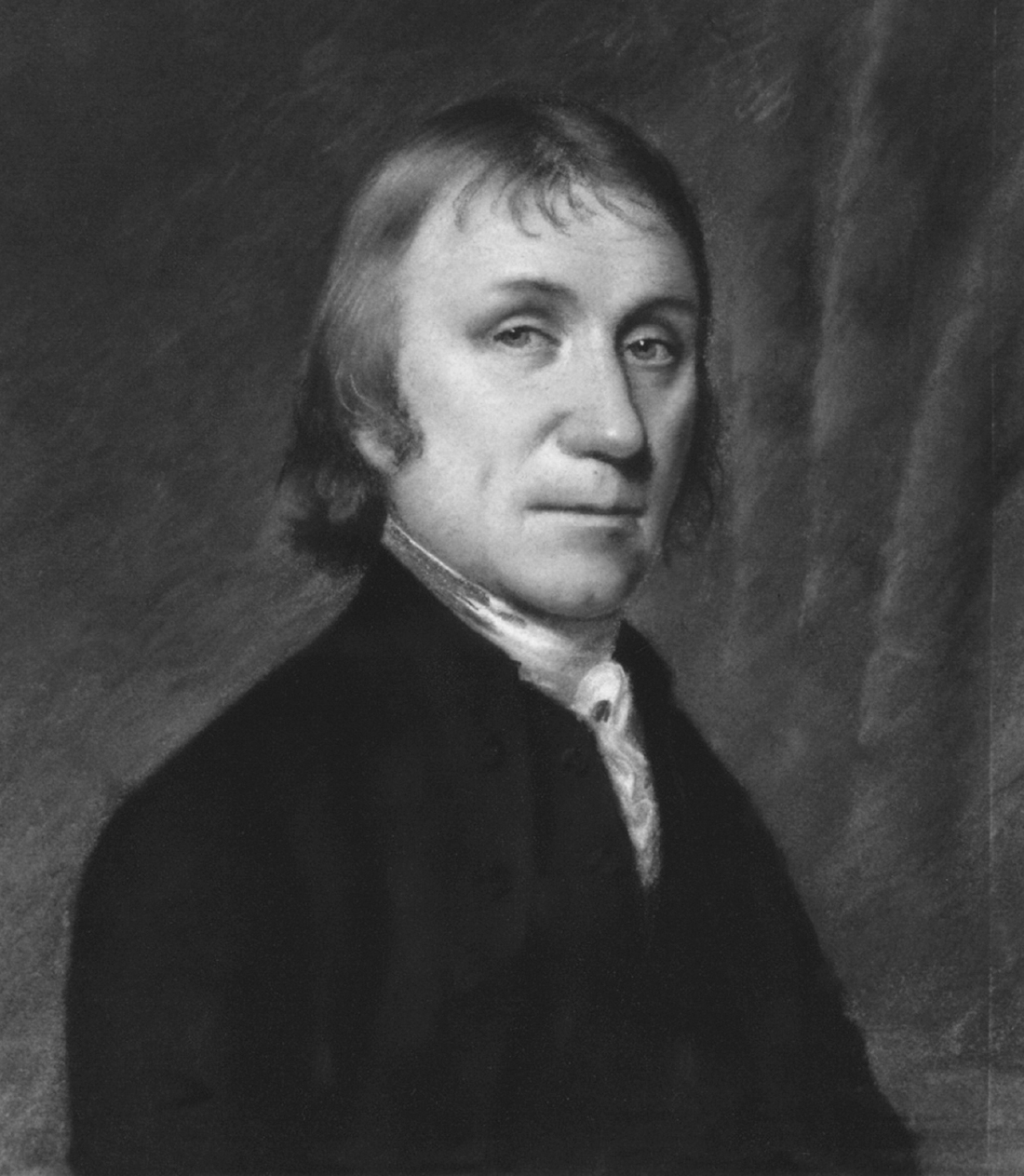
Joseph Priestley, a prominent Leeds clergyman and scientist.
Chapter 1
A HISTORY OF LEEDS
In this chapter we take a broad-ranging look at how the town (and later the city) of Leeds developed from the first settlements on the bank of the River Aire, through the emergence of a settled market town, the boom years of the Industrial Revolution and on to the development of post-war Leeds.
The Earliest Settlement
Leeds began as a settlement named Loidis which was part of the kingdom of Elmet, a kingdom roughly corresponding to the area of the West Riding. Within twenty years of the Norman Conquest of 1066, Leeds was a manor with a population of around 200 under the overlordship of a man named Ilbert de Lacy. In these early years, the area was predominantly agricultural: a mill, church and farm labourers working for a master.
The settlement stood beside the River Aire, close to where todays Leeds Minster stands, and extending outwards to the west. This spot was close to an important crossing point of the River Aire which was to prove so valuable to trade and industry in the centuries to come.
Leeds in the Middle Ages
The towns first charter was granted in 1207, but unlike some of its neighbours like York and Pontefract, Leeds had no key territorial advantages. There was no castle and the town didnt stand on a key trade route, although it did have the River Aire as a means of transport for trading activities.
Nevertheless, Leedss position at roughly halfway between London and Edinburgh and between the east and west coasts meant that its potential for trading could not be overlooked, as would be proved during the centuries to come. Under the terms of the towns charter, an organised community began to take shape, with a bailiff who oversaw a court of justice, the first streets developing around Briggate, and an organised market attended by those in the surrounding settlements.
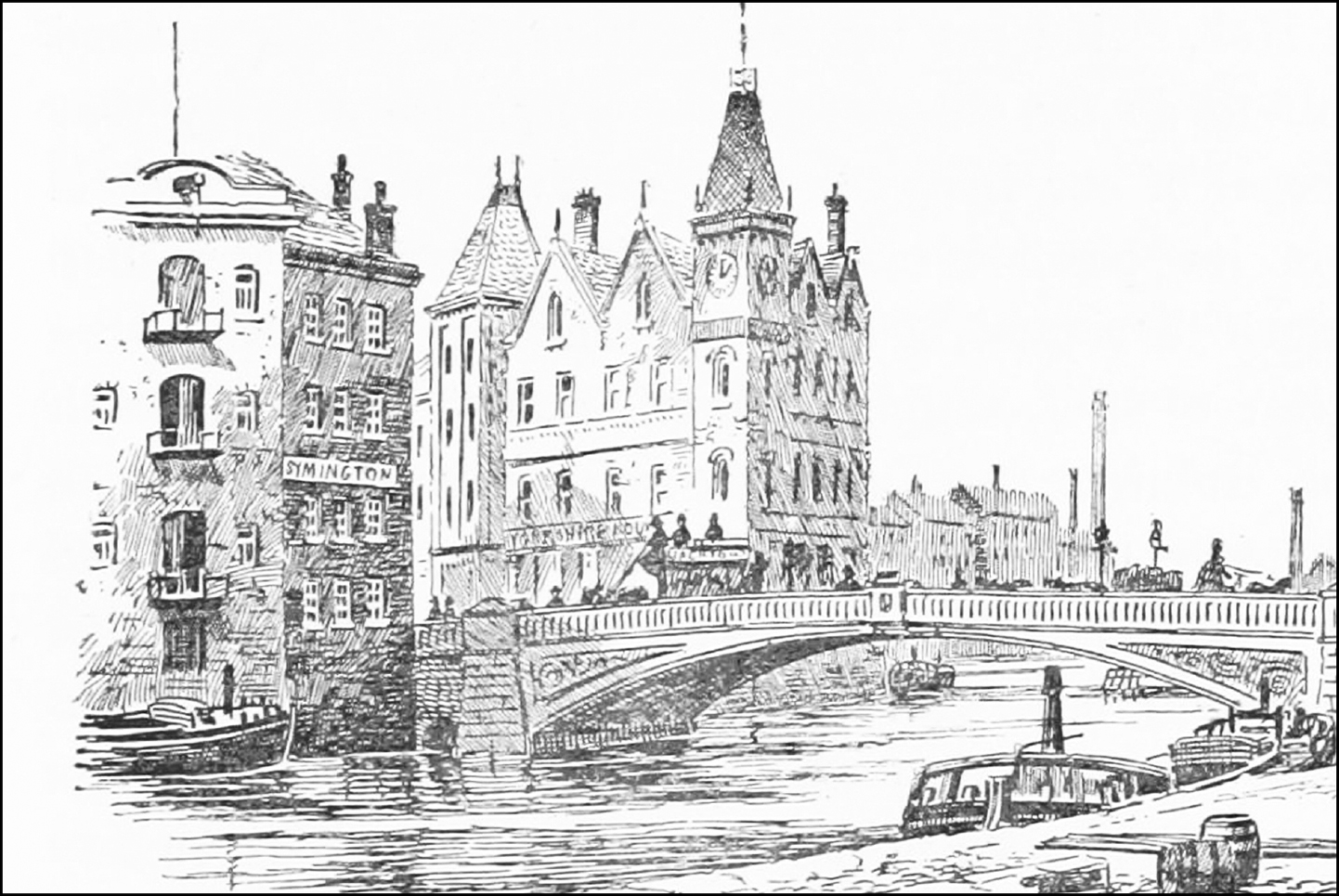
Leeds Bridge, close to one of the earliest crossing points of the Aire.
Just before the Black Death in 1348, which is estimated to have wiped out up to half the UKs population, the parish of Leeds had around 1,000 inhabitants 300 of whom lived in the town centre. This was a small settlement when compared with the likes of Yorkshire towns which are now themselves much smaller than Leeds, including Selby and Ripon.
The heart of life in Leeds during the medieval era was the land between Briggate, Kirkgate and the River Aire. After having passed through ownership of the de Gant family (who received the manor of Leeds after the Norman Conquest), Ranulf, Earl of Chester, and then the de Lacys, King Henry IV was the overlord of Leeds on his accession in 1399.
In the early Middle Ages, most wool was produced in the south of England. However by 1300, as guild regulations became stricter even in towns such as York and Beverley, northern wool producers began to move south to Leeds and the surrounding areas. By the early sixteenth century, whole families were involved in the production of wool cleaning it, teazling it, spinning and then weaving. It was finally sent on to a fulling mill to be finished and then sold on. Leeds was particularly well known for the production of broadcloth a cheap but good quality textile.
By the Tudor period, Leeds was known as a textile town, helped no doubt by the presence of nearby Kirkstall Abbey, a large wool producer and trader. However, until the thirteenth century, wool was only produced on a small scale, for those who would be using it themselves.
In 1533, the town was described in The Annals of Yorkshire as being
two miles lower than Christal Abbey, on Aire river, is a praty market, having one paroche churche reasonably well buildid, and as large as Bradford, but not so quik as it.
Next page

